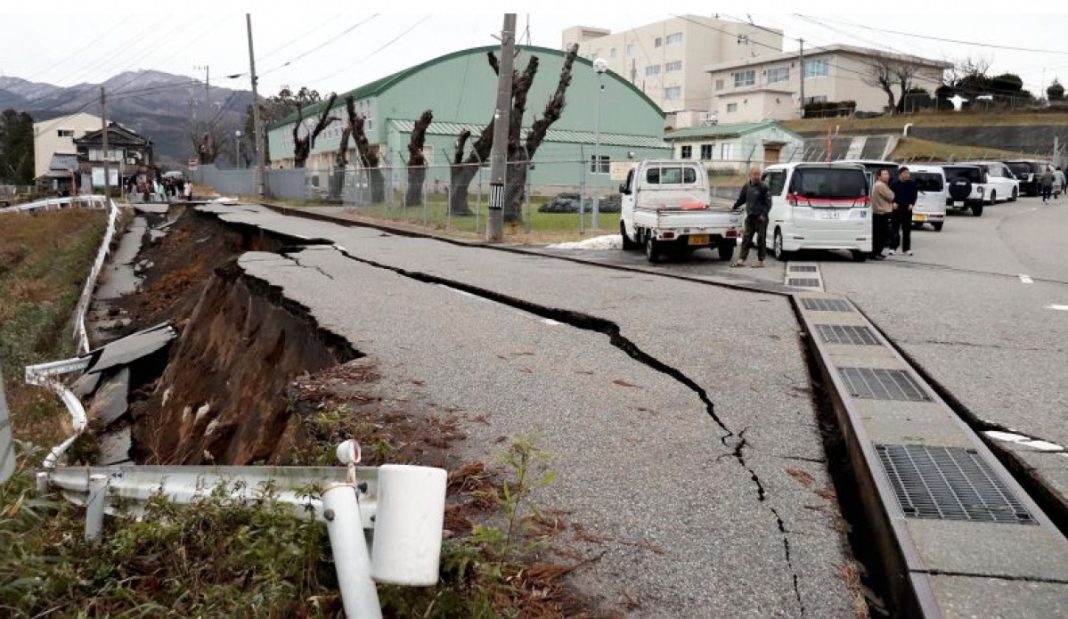NOTO, Japan – A significant earthquake struck the Noto region in Central Japan on Monday, January 1, 2024, afternoon, leading to tsunami warnings and immediate evacuation orders across several prefectures.
The quake, centered in Ishikawa Prefecture, caused structural damage, power outages, and disrupted mobile services, as reported by officials and Japan’s public broadcaster.
The earthquake occurred around 4:10 p.m. local time and registered a magnitude of 7.6 on the Japanese seismic intensity scale, according to the Japan Meteorological Agency (JMA).
The United States Geological Survey (USGS) recorded the earthquake at a slightly lower magnitude of 7.5.
While this quake’s magnitude was notably less than the devastating 8.9 magnitude earthquake that hit Japan in 2011, leading to a tsunami, thousands of deaths, and the Fukushima power plant crisis, Monday’s quake is still considered significant.
The JMA highlighted the quake’s shallow depth, which can often intensify the impact of seismic events. However, initial reports from Ishikawa Prefecture authorities indicated no severe damage to critical infrastructure.
In a reassuring update, an official from Japan’s Nuclear Regulatory Agency reported no abnormalities at the Shika nuclear power plant’s radioactivity monitoring stations in Ishikawa.
This news comes as a relief given the country’s heightened sensitivity to nuclear issues following the Fukushima disaster.
Despite the absence of immediate major damage, the meteorological agency cautioned that the region could experience aftershocks and tsunamis for up to a week.
Residents have been advised to remain vigilant for at least two to three days following the initial quake.
In response to the potential tsunami threat, the JMA issued a major tsunami warning for the Noto Peninsula, which faces the Japan Sea. This warning prompted urgent calls for residents to evacuate to higher ground.
The agency also warned of possible waves reaching up to five meters (approximately 16 feet) in Noto and up to three meters in areas along the coasts of Sado Island, Niigata, and Toyama Prefectures.
The situation remains dynamic, and officials continue to monitor developments closely.
The Japanese government and local authorities are coordinating rescue and relief efforts while maintaining a state of alert for any further seismic activity.







